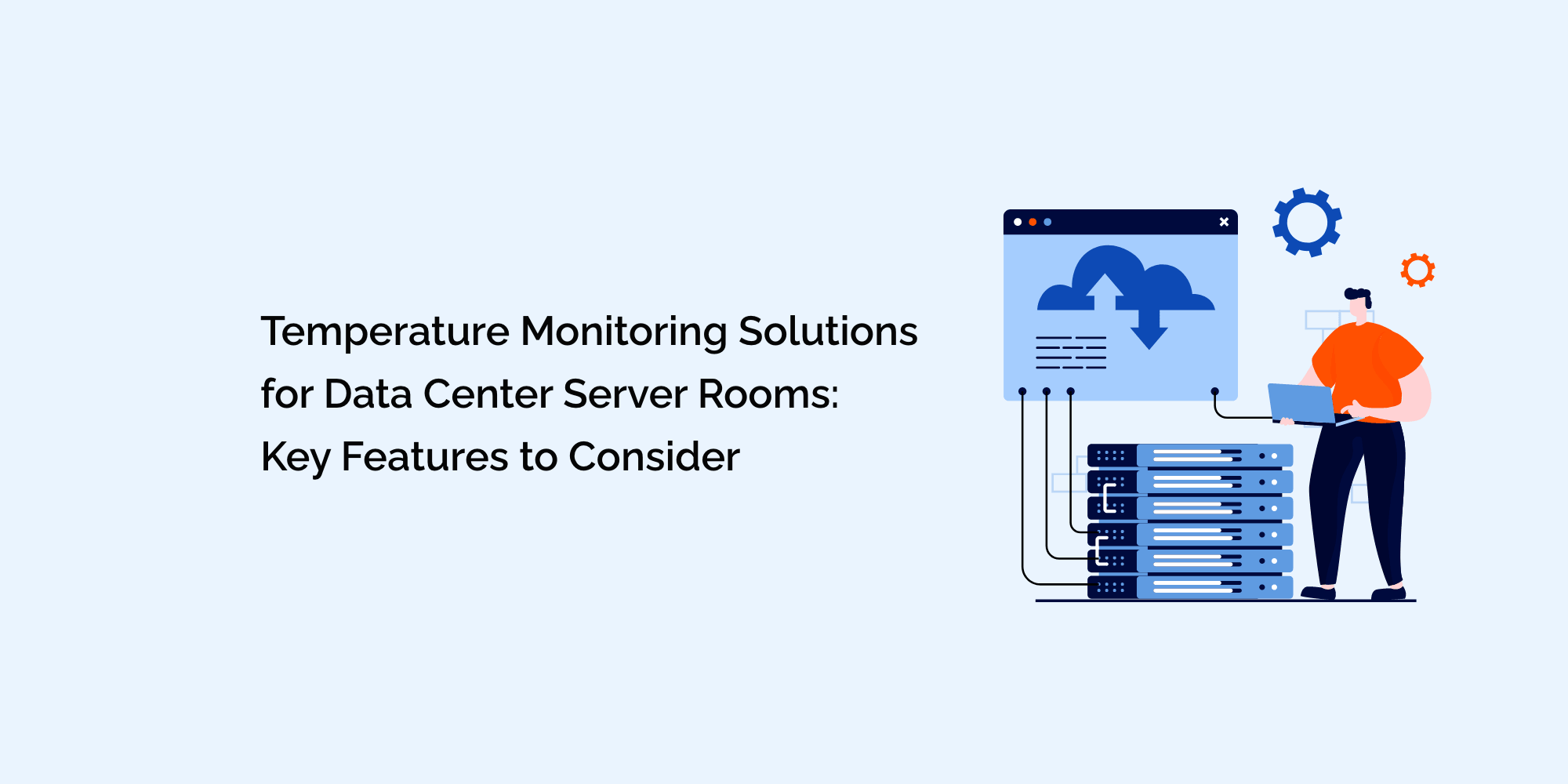Title: Temperature Monitoring Solutions for Data Center Server Rooms: Key Features to Consider
Introduction:
In the digital era, data centers serve as the backbone of various industries, powering critical applications and services that fuel our daily lives. The reliable performance and longevity of data centers depend on maintaining optimal environmental conditions, particularly within server rooms. Temperature monitoring is a fundamental aspect of data center management, enabling administrators to proactively detect temperature fluctuations, prevent overheating, and optimize cooling efficiency. Choosing the right temperature monitoring solution is crucial for data centers to ensure peak performance, prevent downtime, and safeguard valuable data. In this comprehensive blog, we will explore the significance of temperature monitoring in data center server rooms, the key features to consider when selecting monitoring solutions, and the benefits of implementing effective temperature management.
The Importance of Temperature Monitoring in Data Center Server Rooms:
Temperature monitoring in data center server rooms is essential due to the following reasons:
-
Hardware Reliability: Modern data centers house high-performance hardware components that operate optimally within specific temperature ranges. Monitoring ensures that these components remain within the recommended temperatures, extending their lifespan and reducing the risk of hardware failures.
-
Preventing Downtime: Overheating can lead to critical hardware failures, resulting in costly downtime and potential data loss. Real-time temperature monitoring allows administrators to take immediate action and prevent unplanned outages.
-
Energy Efficiency: Efficient cooling management based on real-time temperature data allows data centers to optimize cooling systems for energy efficiency, reducing operational costs and environmental impact.
-
Proactive Issue Detection: Early detection of temperature fluctuations enables administrators to address potential issues before they escalate, reducing the risk of hardware failures and downtime.
- Ensuring Data Integrity: Temperature monitoring plays a critical role in protecting valuable data by reducing the risk of temperature-related hardware failures.
Key Features to Consider in Temperature Monitoring Solutions:
When selecting a temperature monitoring solution for data center server rooms, consider the following key features:
-
Accuracy and Precision: The accuracy and precision of temperature sensors are crucial to ensure reliable temperature readings. Choose solutions with high-quality sensors that provide precise data.
-
Remote Monitoring Capability: Remote monitoring enables administrators to access real-time temperature data from anywhere, facilitating immediate action in case of temperature fluctuations or issues.
-
Alerts and Notifications: Temperature monitoring solutions should provide customizable alerts and notifications when temperatures exceed predefined thresholds. This feature enables administrators to respond promptly to potential issues.
-
Redundant Monitoring: Implement redundant temperature monitoring systems to ensure continuous monitoring, even during system failures or outages. Redundancy ensures that critical data is not lost during emergencies.
-
Scalability and Flexibility: Choose solutions that can scale with your data center's growth and offer flexibility in terms of sensor placement and integration with existing infrastructure.
-
Integration with Infrastructure Management: Integration with existing infrastructure management platforms allows centralized monitoring and streamlined data analysis, optimizing data center operations.
-
Historical Data Analysis: Historical temperature data analysis helps identify trends and patterns that can lead to potential temperature-related issues, enabling proactive preventive measures.
-
Calibration and Maintenance: Regular calibration and maintenance of temperature sensors ensure accurate and reliable data collection over time.
- Data Security and Compliance: Ensure that the temperature monitoring solution adheres to data security standards and compliance requirements to protect sensitive temperature data.
Benefits of Implementing Effective Temperature Monitoring:
By investing in an effective temperature monitoring solution, data centers can reap the following benefits:
-
Improved Hardware Reliability: Optimal temperature management extends the lifespan of hardware components, reducing the need for frequent replacements and improving hardware reliability.
-
Minimized Downtime: Proactive temperature monitoring prevents temperature-related hardware failures, leading to reduced downtime and improved service availability.
-
Energy Savings: Data-driven cooling strategies optimize energy consumption, leading to cost savings and a more sustainable data center operation.
-
Enhanced Cooling Efficiency: Real-time temperature data allows administrators to fine-tune cooling systems for optimal performance, improving cooling efficiency and reducing cooling costs.
-
Compliance and Reporting: Temperature monitoring solutions that offer compliance reporting help data centers adhere to industry standards and regulations.
- Predictive Maintenance: Analyzing historical temperature data enables predictive maintenance, allowing administrators to schedule preventive actions before potential issues arise.
Types of Temperature Monitoring Solutions:
Data centers have various temperature monitoring solutions to choose from, including:
-
Wired Temperature Sensors: Wired temperature sensors physically connect to the monitoring system through cables, providing accurate and reliable temperature readings.
-
Wireless Temperature Sensors: Wireless temperature sensors use wireless technology to transmit temperature data to the monitoring system, offering flexibility in placement and easy installation.
-
Digital Temperature Sensors: Digital temperature sensors provide precise and accurate temperature readings in digital format, compatible with modern digital monitoring systems.
-
Remote Temperature Monitoring Solutions: Remote temperature monitoring solutions allow administrators to access temperature data from off-site locations, providing real-time visibility into server room conditions.
- IoT-Enabled Sensors: Internet of Things (IoT) enabled sensors can transmit temperature data to a central monitoring system, facilitating remote access and control.
Integrating Temperature Monitoring with Data Center Management:
Integrating temperature monitoring solutions with data center management platforms allows administrators to have a comprehensive view of data center conditions, including temperature, humidity, and airflow. This integration enables data-driven decision-making and optimized data center performance.
Conclusion:
Temperature monitoring in data center server rooms is a critical aspect of data center management, ensuring optimal hardware performance, preventing downtime, and optimizing cooling efficiency. When selecting a temperature monitoring solution, consider key features like accuracy, remote monitoring capabilities, alerts, and integration with existing infrastructure. Implementing an effective temperature monitoring system brings numerous benefits, including improved hardware reliability, reduced downtime, energy savings, and compliance adherence.
As data centers continue to evolve to meet the growing demands of the digital landscape, temperature monitoring will remain a foundational element in ensuring peak data center performance, safeguarding valuable data, and meeting the needs of businesses and organizations seeking uninterrupted services and operational excellence.








